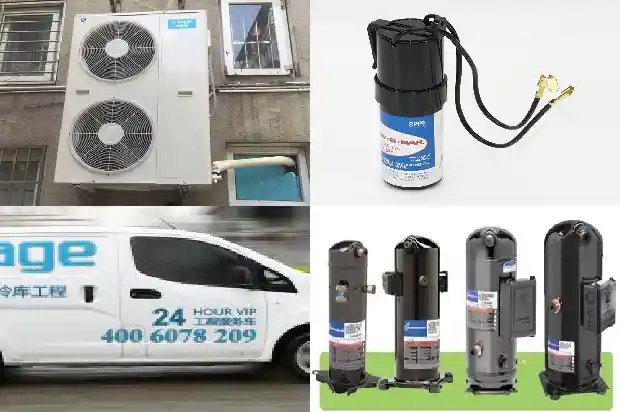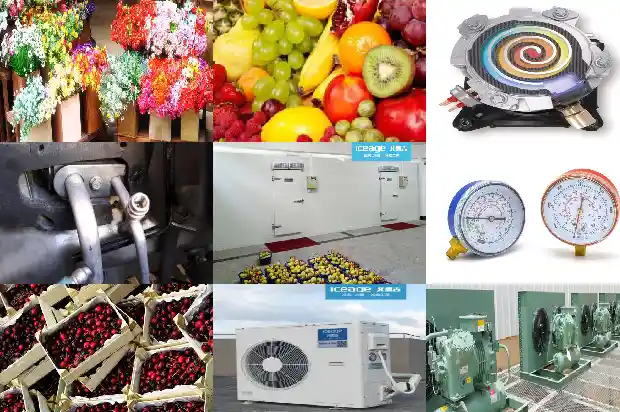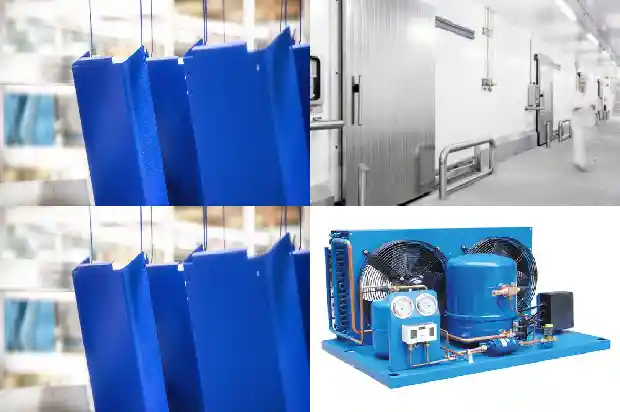The Indoor Humidity Is Too High in Summer. How to Dehumidify? Can the Dehumidification Mode of the Air Conditioner Really Save Electricity and Money?
2025-03-11
It's the plum rain season again. The moisture in the air seems to be about to drip out, and only by keeping the air conditioner on can we keep the indoor environment dry. Non - HVAC professionals may not understand how the air conditioner dehumidifies. Here is a popular science article that is easy to understand.
Research shows that the human body is most comfortable in an air environment with a humidity of 50% - 70%. When the humidity is higher than 70%, the human body's comfort level will decrease.
Pt.1 How Does the Air Conditioner Dehumidify?
The air conditioner has a dehumidification function in two modes:
a) Cooling mode
This is a mode that any air conditioner has and is also the most basic function of an air conditioner. The process of air conditioner cooling is inevitably accompanied by dehumidification. When the humid air passes through the evaporator of the air conditioner, its temperature will drop significantly. The air humidity is in a supersaturated state, and the excess water vapor precipitates in the form of condensed water and condenses on the fins of the evaporator, which is called "condensation". When the cooling mode reaches a certain equilibrium state, the air humidity will also drop to a certain level.
Psychrometric chart
b) Independent dehumidification mode
This method is called constant temperature dehumidification by professionals in the industry.
There are also two ways to heat the temperature of the air outlet: One is to use an electric heating component to heat the air after it passes through the evaporator. This type of air conditioner is equipped with an electric heating device in the indoor unit. After the air passes through the evaporator (with a low surface temperature) and precipitates condensed water, the electric heating device then heats this part of the cooled air, keeping the temperature of the air outlet of the air conditioner basically the same as that of the air inlet.
The other is to use the heat generated by the condenser to heat the dehumidified air. This type of air conditioner has two exchangers, a and b. In the independent dehumidification mode, they are respectively switched to the evaporator and the condenser. Similarly, the air passes through the evaporator a (with a low surface temperature) and precipitates condensed water, and then the condenser b (with a high surface temperature) replaces the function of the electric heating component in the first method, also keeping the temperature of the air outlet of the air conditioner basically the same as that of the air inlet. These two heating methods only differ in the heating device and the heating method, and the latter is a pure physical method.
Pt.2 It is often said that turning on the dehumidification function of the air conditioner can save electricity and money. Is it true?
In fact, the "dehumidification" of our household air conditioner is a special cooling mode. The cooling mode is a mode of normal air supply and continuous dehumidification, while the dehumidification mode reduces the air supply and continuously dehumidifies.
In the dehumidification mode, in order to achieve a better dehumidification effect, the air conditioner generally operates at a low air volume. At this time, the temperature of the heat exchanger of the indoor unit of the air conditioner is lower, which is more conducive to the condensation of water vapor in the air into water. In the dehumidification mode, the air conditioner will intermittently start the compressor, which is a "big power consumer", and at the same time, it will lower the indoor temperature. In the cooling mode, the compressor will keep running until the preset temperature is reached.
At first glance, it seems that dehumidification saves a lot more electricity. However, a large number of air conditioner energy efficiency tests show that when the compressor of the air conditioner runs stably and the indoor air output is the largest, the cooling efficiency is the highest, that is, our COP is higher. Relatively speaking, in the dehumidification mode, the compressor starts and stops intermittently, and with a lower air volume, its cooling efficiency is naturally greatly reduced.
To give a simple example, in the normal cooling mode, the air conditioner consumes 2 kilowatt - hours of electricity and generates 6 kilowatt - hours of cooling capacity. In the dehumidification mode, the air conditioner consumes 1 kilowatt - hour of electricity and generates 1.5 kilowatt - hours of cooling capacity. On the surface, the dehumidification mode uses 1 kilowatt - hour less electricity, but this is not the case. Think about it in reverse and you'll understand. If you need to maintain the room at a certain temperature and require 6 kilowatt - hours of cooling capacity, then the cooling mode only needs 2 kilowatt - hours of electricity, while the dehumidification mode requires 4 kilowatt - hours of electricity. The difference is immediately obvious.
Pt.3 Do these 7 correct usage methods when using the air conditioner for cooling to save electricity and be healthier.
Research shows that the human body is most comfortable in an air environment with a humidity of 50% - 70%. When the humidity is higher than 70%, the human body's comfort level will decrease.

Pt.1 How Does the Air Conditioner Dehumidify?
The air conditioner has a dehumidification function in two modes:
a) Cooling mode
This is a mode that any air conditioner has and is also the most basic function of an air conditioner. The process of air conditioner cooling is inevitably accompanied by dehumidification. When the humid air passes through the evaporator of the air conditioner, its temperature will drop significantly. The air humidity is in a supersaturated state, and the excess water vapor precipitates in the form of condensed water and condenses on the fins of the evaporator, which is called "condensation". When the cooling mode reaches a certain equilibrium state, the air humidity will also drop to a certain level.
Psychrometric chart
b) Independent dehumidification mode
This method is called constant temperature dehumidification by professionals in the industry.

There are also two ways to heat the temperature of the air outlet: One is to use an electric heating component to heat the air after it passes through the evaporator. This type of air conditioner is equipped with an electric heating device in the indoor unit. After the air passes through the evaporator (with a low surface temperature) and precipitates condensed water, the electric heating device then heats this part of the cooled air, keeping the temperature of the air outlet of the air conditioner basically the same as that of the air inlet.
The other is to use the heat generated by the condenser to heat the dehumidified air. This type of air conditioner has two exchangers, a and b. In the independent dehumidification mode, they are respectively switched to the evaporator and the condenser. Similarly, the air passes through the evaporator a (with a low surface temperature) and precipitates condensed water, and then the condenser b (with a high surface temperature) replaces the function of the electric heating component in the first method, also keeping the temperature of the air outlet of the air conditioner basically the same as that of the air inlet. These two heating methods only differ in the heating device and the heating method, and the latter is a pure physical method.
Pt.2 It is often said that turning on the dehumidification function of the air conditioner can save electricity and money. Is it true?
In fact, the "dehumidification" of our household air conditioner is a special cooling mode. The cooling mode is a mode of normal air supply and continuous dehumidification, while the dehumidification mode reduces the air supply and continuously dehumidifies.
In the dehumidification mode, in order to achieve a better dehumidification effect, the air conditioner generally operates at a low air volume. At this time, the temperature of the heat exchanger of the indoor unit of the air conditioner is lower, which is more conducive to the condensation of water vapor in the air into water. In the dehumidification mode, the air conditioner will intermittently start the compressor, which is a "big power consumer", and at the same time, it will lower the indoor temperature. In the cooling mode, the compressor will keep running until the preset temperature is reached.
At first glance, it seems that dehumidification saves a lot more electricity. However, a large number of air conditioner energy efficiency tests show that when the compressor of the air conditioner runs stably and the indoor air output is the largest, the cooling efficiency is the highest, that is, our COP is higher. Relatively speaking, in the dehumidification mode, the compressor starts and stops intermittently, and with a lower air volume, its cooling efficiency is naturally greatly reduced.
To give a simple example, in the normal cooling mode, the air conditioner consumes 2 kilowatt - hours of electricity and generates 6 kilowatt - hours of cooling capacity. In the dehumidification mode, the air conditioner consumes 1 kilowatt - hour of electricity and generates 1.5 kilowatt - hours of cooling capacity. On the surface, the dehumidification mode uses 1 kilowatt - hour less electricity, but this is not the case. Think about it in reverse and you'll understand. If you need to maintain the room at a certain temperature and require 6 kilowatt - hours of cooling capacity, then the cooling mode only needs 2 kilowatt - hours of electricity, while the dehumidification mode requires 4 kilowatt - hours of electricity. The difference is immediately obvious.
Pt.3 Do these 7 correct usage methods when using the air conditioner for cooling to save electricity and be healthier.
- Don't be in a hurry to turn on the air conditioner after entering the house.
In hot summer days, the blood vessels of people dilate outdoors. If you turn on the air conditioner as soon as you enter the house and the temperature drops suddenly, the blood vessels may suddenly contract, and the blood pressure may suddenly rise, causing discomfort. It is recommended that you don't be in a hurry to turn on the air conditioner after entering the house on a very hot day. Wait until your body temperature returns to normal and stable before turning it on. - Turn on the air conditioner first and then close the windows.
When cooling and ventilating the room, you should turn on the air conditioner first and then close the windows. When the air conditioner is just turned on, some accumulated pollutants may be released and volatilized. Closing the windows a few minutes later is helpful for the dispersion of pollutants. - The air conditioner temperature can be set at 26°C.
The best temperature difference between the indoor and outdoor environments is between 5°C and 6°C. If the difference is too large, it will put a burden on the human body. The most suitable temperature for the air conditioner is 26°C, which is comfortable and not easy to cause illness. 26°C can not only ensure a cool and comfortable environment but also ensure that the temperature difference between the indoor and outdoor environments is not too large, avoiding catching a cold. - Try not to lay a mat when the air conditioner is on.
People suffering from spinal diseases, frozen shoulder, and arthritis may experience a recurrence of their old diseases if they sleep on a mat when the indoor temperature is low. People with gastrointestinal discomfort or those who are afraid of catching a cold may also be prone to abdominal pain and diarrhea if they sleep on a mat.
Therefore, it is best to turn on the air conditioner less when sleeping on a mat.
- Clean the air conditioner regularly.
If the air conditioner is not cleaned for years, it will accumulate various germs and mites that are harmful to health. Once inhaled, they will cause respiratory infections of different degrees and may also lead to "air conditioner lung". Therefore, it is recommended to clean the air conditioner once every one to two months in summer. In addition to cleaning the air conditioner panel and the filter screen, professional air conditioner disinfectant should also be used for thorough cleaning and disinfection. - Ensure good indoor ventilation.
In order to avoid the loss of indoor cooling capacity, the doors and windows are often closed tightly to take heat preservation measures when the air conditioner is on. However, staying in a closed and low - temperature indoor environment for a long time may lead to air pollution due to poor air circulation. It is recommended to open the windows for ventilation appropriately after the air conditioner has been turned on for 3 hours, or install an air purifier or a fresh air system indoors to help improve the indoor air quality. - Don't turn off the air conditioner for a short trip out.
Turning the air conditioner on and off for a short trip out not only fails to save electricity but also causes damage to the air conditioner compressor due to overly frequent operations. The instantaneous high voltage generated during startup will consume more electricity. If you go out for a short time, you don't need to turn off the air conditioner.
In the sweltering summer, the air conditioner has become an essential cooling device in every household.
Mastering simple tips for using the air conditioner to save electricity can help you spend a comfortable and refreshing summer with peace of mind.
Related Articles
- How to distinguish the quality of refrigeration compressor unit of constant temperature and humidity test chamber?
- What is a constant temperature and humidity air conditioner?
- What Precautions Should Be Taken When Using a Fresh - keeping Cold Storage in Summer?
- Defrosting Operation Modes of Refrigeration Equipment and Its Control Components
- Frosting in the Cold Storage? A Detailed Explanation of the 9 Reasons for Frosting of Air Coolers and 4 Defrosting Methods~~
- Why Does the Air Cooler Frost? What Are the Defrosting Methods?
- Noise Reduction and Vibration Damping in Refrigeration and Air Conditioning Systems
- Air-cooled, Water-cooled, Chilled Water, Dual Cooling Source and Free Cooling Precision Air Conditioners
- Installation and Welding of Precision Air Conditioning Systems
- Performance Comparison of Air-Cooled Heat Pumps, Multi-Split Systems and Water-Cooled Units
- Performance Comparison of Multi - connected Units, Air - cooled Modules and Water - cooled Screw Units
- The Influence of Temperature Changes on the Air Conditioning Refrigeration System
- Analysis of the Main Functions and Components of Refrigeration Air Conditioners
- Comparison Issues between Air-Cooled Screw Units and Air-Cooled Modular Units
- Analysis of the Working Process and Principle of Hot Fluoride Defrosting for Air Coolers
- Advantages and Disadvantages of Air-cooled Multi-connected Units and Analysis of Their Components
- Do You Have a Thorough Grasp of All 34 Components and Functions of the Air-Cooled Multi-Split System?
- Which is Better, Air Cooler or Aluminum Pipe Row? How to Choose?
